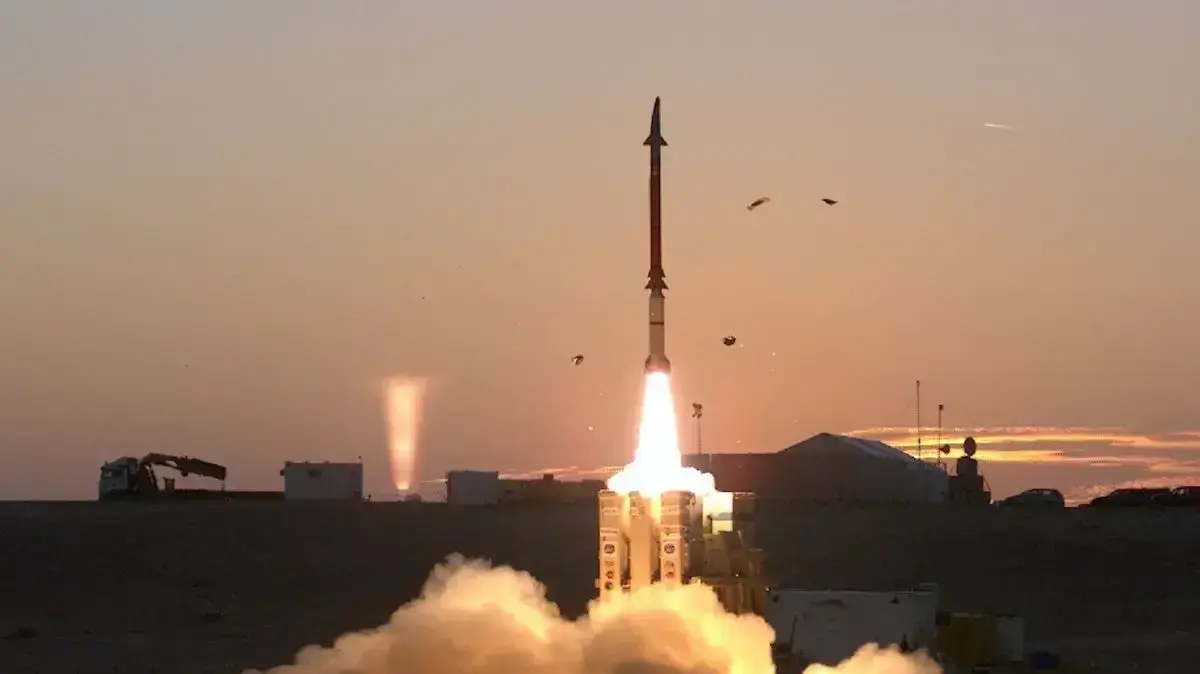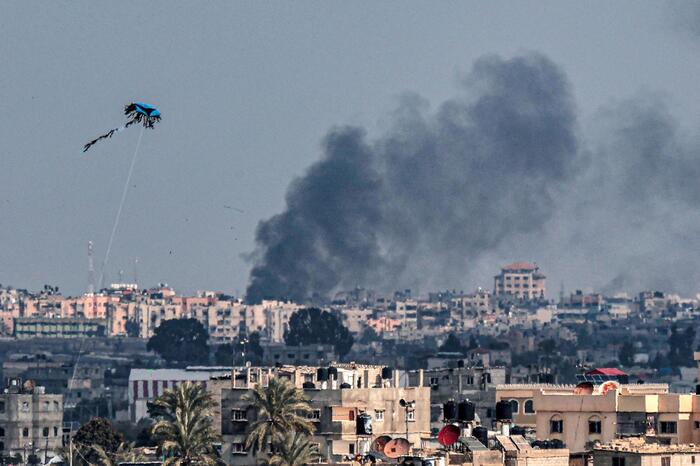Hamas - and to a lesser extent Islamic Jihad - have fired nearly 3,500 rockets on Israeli territory since the 10th in the most intense and numerous attacks that Palestinian militias in the Gaza Strip have launched to date. The Israeli Army assures that its anti-missile shield, known as the Iron Dome, is intercepting more than 90% of the howitzers that pose a danger to the population of the Jewish State, a figure similar to those registered during the missile rains of 2012 or 2014. But some analysts see in Hamas's strategy - which is showing notable improvements in the coordination, precision, range and speed of fire - an attempt to push the Israeli defense system to the limit.
An analysis by Michael Armstrong, a professor at Brock University (Canada) who has been monitoring rocket launches from the Strip for more than a decade, shows that the record of 312 has been broken every day since the start of the recent hostilities. projectiles launched in 24 hours that was reached in 2012. Armstrong recounts by phone: “They are trying to show the maximum possible force. They have managed to fire 137 rockets on an area in five minutes, an unimaginable rate in 2014, but which is still very far from that of a regular Army ”.
The Israeli Army confirmed the need to build a specific system for the defense of short-range missiles after Hamas fired Qassem 2 for the first time in 2002 (with a range of less than 10 kilometers) and, above all, after the launch. in 2006 of more than a thousand projectiles by the Lebanese party-militia Hezbollah.
Five years later, Iron Dome became operational. Designed by Israel Aerospace Industries and Rafael Advanced Defense Systems - with the advice of the US - its radars detect and analyze the launch of projectiles from nearby areas. In a few seconds, the system decides which rockets are going to land in unpopulated places and which ones pose a threat to the population and must be intercepted. Iron Dome has 10 batteries deployed throughout the country, each with three or four shuttles capable of firing up to 20 interceptor missiles. "The numbers are still fuzzy, but it appears that the percentage of discarded rockets has dropped a lot since 2014," adds Armstrong.
The Palestinian militias have at least seven types of rockets. The most abundant are those with a range of less than 16 kilometers. However, for the first time, Palestinian armed groups are being able to maintain constant pressure on Tel Aviv and its suburbs. The Israeli intelligence services estimate that Hamas, which
de facto
rules
in the Strip, possesses dozens of R-160s and M-302s that threaten areas distant more than 150 kilometers from Gaza, such as the city of Haifa. More worrying are the hundreds of J-80, M-75 and Fajr-5 that, in addition to Tel Aviv, put Jerusalem, Ben Gurion Airport and the coastal strip, the most densely populated area in the country and its engine in check. economic.
This month's attacks from the Palestinian fringe have caused 12 deaths on the Israeli side;
retaliation by the Israeli army has killed more than 200 people and injured some 1,200.
Defending against massive attacks from the Strip is also costing Israel huge.
Each interceptor launched by Iron Dome has a cost of between 50,000 and 100,000 dollars (between 41,000 and 82,000 euros), figures considerably lower than those of missiles of other systems designed for more distant threats, such as the American Patriot.
The Hamas projectiles, however, cost an estimated $ 400 to $ 2,000.
More information
Israel tries to silence and confuse the foreign press in the Gaza conflict
What is happening between Palestine and Israel?
The keys to understanding the conflict
Khaled Hroub, an expert on Hamas and a professor at Northwestern University in Doha (Qatar), believes that the Palestinian militia is immersed in a new political and military strategy. "For the first time, the launch of missiles is not due to a Gaza issue, such as the blockade, but to a national issue, the defense of Jerusalem [the recent clashes between Palestinians and Israeli police in the Al Aqsa mosque]," he says. via email. "By launching such an offensive, Hamas is also dealing a political blow to the Palestinian Authority and the Palestine Liberation Organization," he says.
Analysts believe that Palestinian armed groups are receiving military advice from foreign powers, and they coincide in pointing to Iran. Still, Hamas and Islamic Jihad are demonstrating relatively advanced rocket-making capabilities within the Strip. The Israeli secret services also believe that the cost of the arsenal of the Palestinian militias is being covered with money from Arab countries, mainly from Qatar. Despite the powers to assemble and manufacture rockets within Gaza, the question remains of how the armed groups obtain - despite the blockade of the enclave - the material necessary to develop them. Given the impossibility of unloading weapons on the Gazati coast, all eyes point to the tunnels on the border that connect the place with the Egyptian Sinai peninsula.
It's not just Hamas missiles that are constantly evolving.
Israel has also adapted and modernized its Iron Dome to the new threats.
But Armstrong notes that "Palestinian rockets have evolved much more than Israeli defenses."
The Israeli Armed Forces have crushed Hamas tunnels these days, destroyed dozens of shuttles and killed Husam Abu Arbid, one of the leaders of Islamic Jihad.
In addition, they justify the attack on several towers that housed the local international media headquarters by arguing that Hamas used some of these offices to develop its missile arsenal.
The Iron Dome defensive system launched an interceptor missile near Ashkelon on Monday.AHMAD GHARABLI / AFP
Justin Bronk, a researcher at the Royal United Services Institute, says from London that he does not believe that Israel's interceptors are running out. However, he adds that the current conflict is showing that Hezbollah - with more than 100,000 missiles far more advanced than Hamas's - could easily overwhelm Israeli defenses in a full-scale war.
Only the Israeli Armed Forces know in detail to what extent its defensive system is suffering. And only Hamas and Islamic Jihad are clear about the number of rockets they have. Two Israeli defense experts consulted, Michael Herzog and Tal Inbar, coincide in calculating that the militias in the Strip have at least 10,000 more howitzers - most with a range less than 20 kilometers -, which would allow them to keep pace with the attack. current assault for three to four more weeks. Other analysts believe they would have the capacity to continue firing about 400 rockets a day for almost two months. The Palestinian arsenal of interceptors and the number of shells capable of reaching Tel Aviv and Jerusalem will largely depend on the interest of both sides in reaching a ceasefire.














